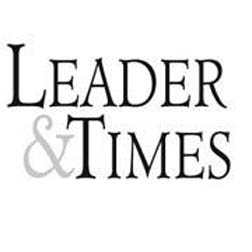OUR OPINION, L&T staff
Ms. Lukwago, thank you for being willing to examine additional information.
Let’s go through your letter.
Your first concern was the opening sentence in an article written by Robert Pierce that stated, “A large portion of the discussion around the 14.8-mill increase over the Revenue Neutral Rate for Seward County has been the county’s health department, and much of that discussion has centered on grant money being used for bonuses.”
You said you didn’t believe that sentence was accurate.
That sentence didn’t say the health department was responsible solely for tax increases, but it is undeniable that many questions have arisen about the health department and how it receives grants and how some of those grants are used for bonuses. Most of the public was unaware of that.
Continued investigation also discovered that signatures for these grants were provided by county commissioners without votes and without public action, something required by statute including the Open Meetings Act.
Clearly much discussion about the health department originated from the RNR.
You also state, “it is my understanding that actually a large portion of the (proposed) increase in our Seward County mill levy is because of a Board Of Tax Appeals case with Conestoga Energy.”
While the original RNR statements that were mailed to the public indicated 21 of a 25.868 mill increase would have been for a perceived “worst case scenario” refund needing $5.9 million, that is not what was ultimately passed.
Instead, they passed a 14.08 mill increase, and only 2 mills of that went toward the refund to bring the total reserve to $2.5 million. They had already collected $1 million last year with a 43-mill tax rate and therefore had another $1 million of this year’s already accounted for in the first 43 mills. The tax increase only funded an additional $500,000 to that fund. So no, it was not a “large portion” of the massive tax increase for the refund. It was a very small portion.
Finally, you say that “grant funds and how they are used at the County Health Department was and is not a large portion of the discussion around the proposed increase in our mill levy.”
You are correct that the health department is not a large portion of the increase of the mill levy, but it has become a focus of discussion based on the research of county funds. Ms. Greeson has even presented changes the commission needs to make in order to comply with the law, and it is good she has suggested the commission follow the law and conduct business in the open. By not doing so, commissioners who signed documents without authorization of the body as a whole are now subject to potential recall efforts. Let’s hope the commission opts to follow the law moving forward and stops signing documents that obligate the taxpayers to hundreds of thousands of dollars in matching funds as well as brings the conversations public as to how the health department operates by using funds for bonuses rather than for additional hours paid.
Ms. Lukwago, you have contributed to this conversation publicly, including the explanation of why the health department is closed on Fridays, and that is helpful. That type of information is constructive for the public to understand the entirety of the operation.
Likewise, the public is entitled to know about these grants before they are secured, what requirements must be met, and how much matching funds are required. Some commissioners have misspoken at meetings by claiming no local funds are used and no bonuses are being paid. Ms. Greeson corrected at least one of these publicly.
Thank you for keeping this conversation in the open.











